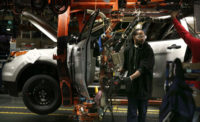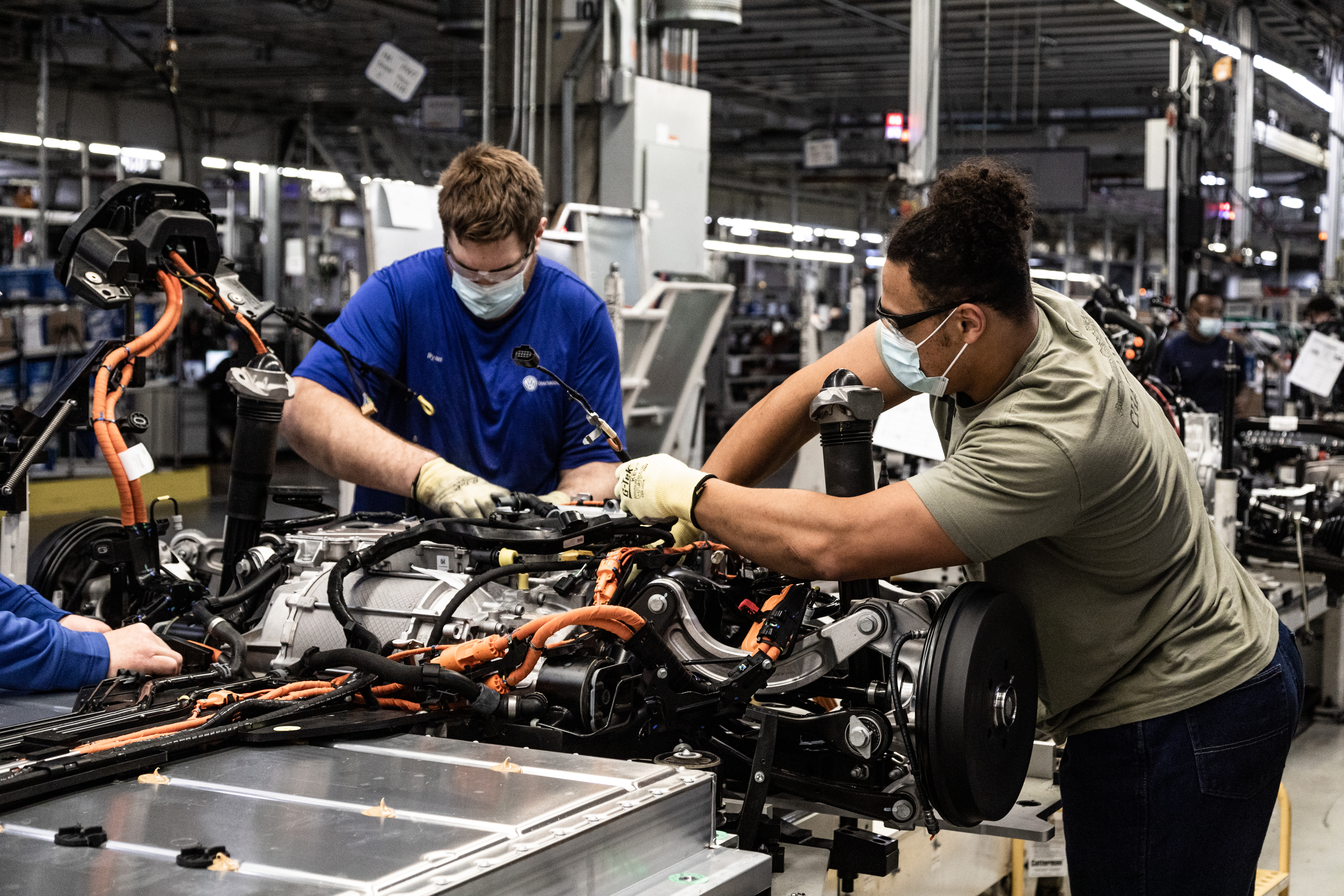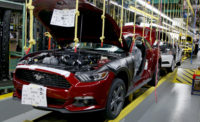DEARBORN, MI—Ford Motor Co. is investing $7 billion to create four new factories on two huge new electric vehicle manufacturing complexes in Kentucky and Tennessee. Ford's joint-partner on the project, battery manufacturer SK Innovation, plans to invest $4 billion. Three of the state-of-the-art facilities will mass-produce batteries to power a variety of Ford and Lincoln EVs. The fourth facility will assemble the next generation of electric F-Series trucks.
A $5.6 billion mega campus in Stanton, TN, called Blue Oval City, will reimagine how vehicles and batteries are manufactured. The vertically integrated facility will include a truck assembly plant and a battery assembly plant, plus a recycling ecosystem.
A $5.8 billion joint-venture plant with SK Innovation in Glendale, KY, will produce batteries. The 1,500-acre BlueOvalSK campus located 50 miles south of Louisville will feature twin colocated plants that will be capable of producing up to 43 gigawatt hours each.
“This is a transformative moment where [we] will lead America’s transition to electric vehicles and usher in a new era of clean, carbon-neutral manufacturing,” says Bill Ford, executive chair of Ford Motor Co. “With this investment and a spirit of innovation, we can achieve goals once thought mutually exclusive—protect our planet, build great electric vehicles Americans will love and contribute to our nation’s prosperity.”
“This is our moment—our biggest investment ever—to help build a better future for America,” adds Jim Farley, president and CEO of Ford Motor Co. “We are moving now to deliver breakthrough electric vehicles for the many rather than the few. It’s about creating good jobs that support American families, an ultra-efficient, carbon-neutral manufacturing system, and a growing business that delivers value for communities, dealers and shareholders.”
According to Farley, Blue Oval City (located 50 miles northeast of Memphis) will be one of the largest manufacturing sites in U.S. history. “Like the iconic Rouge complex in Michigan did a century earlier, Blue Oval City will usher in a new era for American manufacturing,” he claims.
“The 3,600-acre campus covering nearly six square miles (more than twice the size of the Rouge) will encompass vehicle assembly, battery production and a supplier park in a vertically integrated system that delivers cost efficiency while minimizing the carbon footprint of the manufacturing process,” says Farley. “The assembly plant will use always-on cloud-connected technologies to drive vast improvements in quality and productivity.
“The mega campus is designed to add more sustainability solutions, including the potential to use local renewable energy sources such as geothermal, solar and wind power,” explains Farley. “Despite its size, the assembly plant at Blue Oval City is designed to have as minimal an impact as possible on the surrounding environment, and [will] even generate positive impacts.
“The assembly plant’s goal is to have a regenerative impact on the local environment through biomimicry in design of the facility,” adds Farley. “From the start of production in 2025, [our] goal is for the assembly plant to be carbon neutral.”
Through an on-site wastewater treatment plant, the factory will make zero freshwater withdrawals for assembly processes by incorporating water reuse and recycling systems. Zero-waste-to-landfill processes will capture materials and production scrap at an on-site materials collection center to sort and route materials for recycling or processing, either at the plant or at off-site facilities once the plant is operational.



